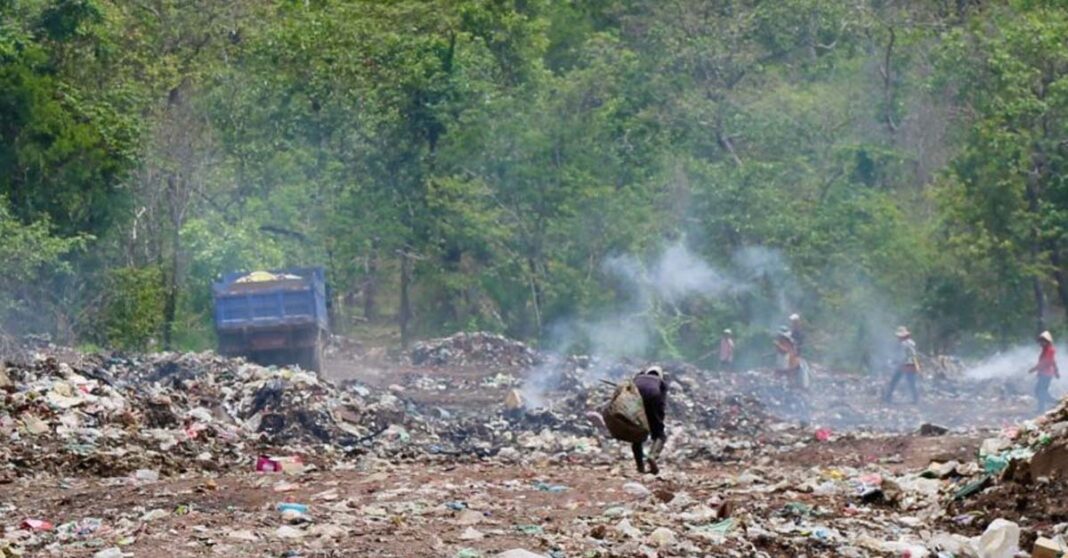Residential waste generation has doubled in Laos over the last two decades, leading to critical environmental and public health issues.
Economic growth and changing lifestyles in Laos over the past 20 years mean that people are now generating twice as much household waste, much of which is not properly disposed of.
A new World Bank report tracks the origins of waste and where it ends up, showing that this pollution can have serious effects on human health, the environment, and the economy.
The new World Bank report, Get CLEAN and GREEN — Solid and Plastic Waste Management in Lao PDR, supported by the Korean Green Growth Trust Fund and PROBLUE, also offers recommendations on how to better control solid waste and plastic pollution and is being used by the government as a key input for a National Plastics Action Plan.

Plastic Pollution a Major Concern
Almost a quarter of the waste found in Lao cities is plastic.
Plastic waste is now found everywhere in the Lao environment, affecting fish catches, blocking drains, causing air pollution, and harming tourism destinations.
The World Bank found that in six Lao cities, 95 percent of plastic pollution is caused by only ten items — all single-use plastics. Single-use food and drink packaging is the top plastic product category, accounting for nearly half of this pollution, and the hospitality and tourism sectors have been identified as a key contributor.
Around 10,000 deaths each year in Laos stem from environmental health factors, with almost half these deaths attributable to air pollution, to which the burning of plastics and other household waste is a major contributor.

According to Alex Kremer, Lao PDR Country Manager, this report shows how plastic waste is harming the incomes and health of Lao people. “Flooded streets, bronchitis, lost jobs in tourism, and reduced fish catches – these are some of the ways that plastic waste can affect the country,” said Mr. Kremer. “But fortunately there are simple solutions. For example, many countries have banned lightweight plastic bags or disposable plates and plastic bottles in restaurants. As a result, less waste is created, tourism sites are more beautiful, drains get blocked less often and children breathe less smoke from burning plastic.”
The Lao government has committed to addressing the solid waste and plastics challenge, through the National Plastics Action Plan — supported by the World Bank and the EU Switch Asia Facility. The plan considers a “circular economy” approach to help achieve the government’s National Green Growth Strategy 2030.

This transition requires behavior change at every stage of a product’s life in the economy: from research and development, through design and material selection, to manufacturing, transport and distribution, and finally usage and end-of-life management.
To help this happen, the new report proposes a Plastic Policy Roadmap and a ten-step roadmap to guide the development of the National Plastic Action Plan. Four types of measure will reduce plastic pollution and consumption: regulatory change supported by enforcement, economic incentives, information and awareness building, and voluntary approaches and agreements.



